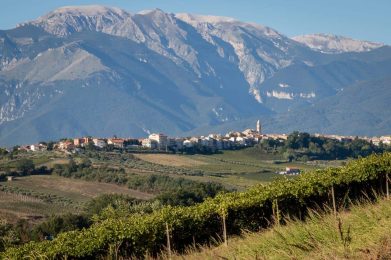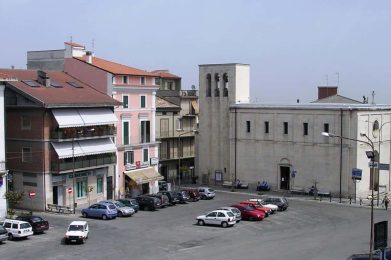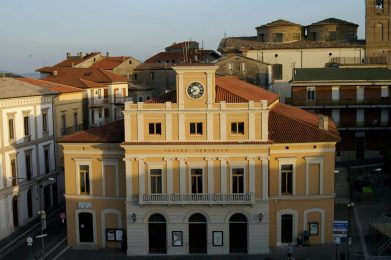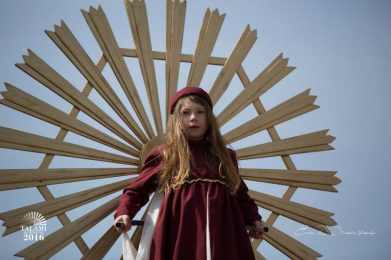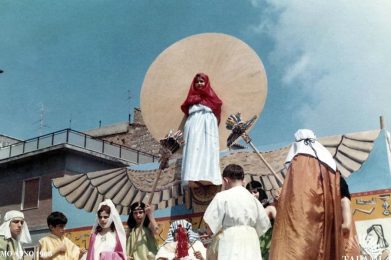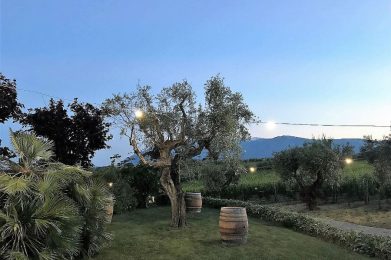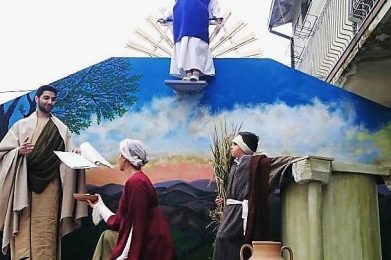The inhabited center of Orsogna develops around the Parish Church of San Nicola di Bari, from the eighteenth century, which also preserves two ancient procession crosses by the artist and goldsmith Nicola da Guardiagrele. Orsogna is surrounded by nature, which colors its streets green and surrounds it with vineyards and olive groves. The Municipality is a member of the Città del Vino association.
Immagini del borgo
Around the village of Orsogna (Ursógne in Abruzzo dialect), in Abruzzo, according to the legend lived bears. The name appears to be derived from the archaic name of its district, located in the Valle del Moro in the village, the contrada Rissogna, today Contrada Fraia.
Renowned for the production of oil and wine, the village was largely reconstructed as it suffered German attacks and a massive allied bombing during World War II, being not far from Ortona along the Gustav Line.
In ancient times, the Abruzzo country was populated predominantly by peasants, but there were also hammers, as the soil around the town is clayey. These craftsmen worked in caves beneath the cobbled cliff of the country, in a favorable position protected by the cold winter.
Today, craftsmen’s caves are almost completely abandoned by World War Wars, but in many caves there are remains of terracotta processing. In 1881 earthquakes of considerable intensity hit Orsogna.
The village resumed in the twentieth century, but in 1943 it fell into the Nazi hands after the armistice of Badoglio. Bombarded by the Allies until June 1944, during the Battle of Orsogna, was released only on June 8, 1944, from the 184th Infantry Regiment “Nembo” of the Italian Liberation Corps. Orsogna, bombed by the allies until June 1944, was released only on June 8, 1944, from the 184th Infantry Regiment “Nembo” of the Italian Liberation Corps.
They deserve a visit, completely restored with a lasting effort for decades, the Church of San Nicola, that of San Rocco, the Franciscan Convent and the Bene Tower, inside which is preserved the painting of ‘The Daughter of Iorio’ by the artist Francesco Paolo Michetti. The painting won the first prize at the Venice Biennale in 1895. For the character of Mila di Codra, the female protagonist of Gabriele D’Annunzio’s homonymous opera, she set the 19th-century Judith Saracens as a model, while for Aligi, the male protagonist of the same Dannunzian opera, laid a farmer, perhaps in the area.
Orsogna also has a rich selection of dishes of the rural tradition, watering with the excellent local wine: from the homemade pasta “carrata” to the “pallette casce and ove”, from “pizz e ffuje” (corn flour focaccia and vegetables) to the “pizz di randigne” (maize), from the “ciammaiche al sugo” (snails) to the “cif e ciaf” made with the pork pillow, to end with sweets: potato crispes, the Easter Pupa in almond paste, “ciaunelle” (uncooked fried donuts), Christmas taralli and pizzelle.
Village of Orsogna
Municipality of Orsogna
Province of Chieti
Abruzzo Region
Inhabitants: 3.881 orsognesi
Center Altitude: 430 m s.l.m.
The municipality is part of:
Città del vino
Protected Natural Areas:
Equipped Territorial Park of Annunziata
BY CAR
- From the north, from the A14 motorway towards Ancona and from the south towards Pescara, exit at Ortona and continue towards Orsogna.
- From Chieti, take the A14 motorway towards Bari and exit at Ortona then continuing towards Orsogna.
- From Pescara, take the SS 16 towards Chieti, continue on the A 14 motorway towards Bari, exit at Ortona, continue towards Orsogna.
ON THE TRAIN
- San Vito – Lanciano railway station (the closest).
BY BUS
- Regional Public Buses of Abruzzo
BY PLANE
- Pescara airport
BY SEA
- Tourist port of Pescara
- Port of Vasto
- Summer – Contemporary and collective painting exhibition.
- Christmas Time – Cribs showcase.

